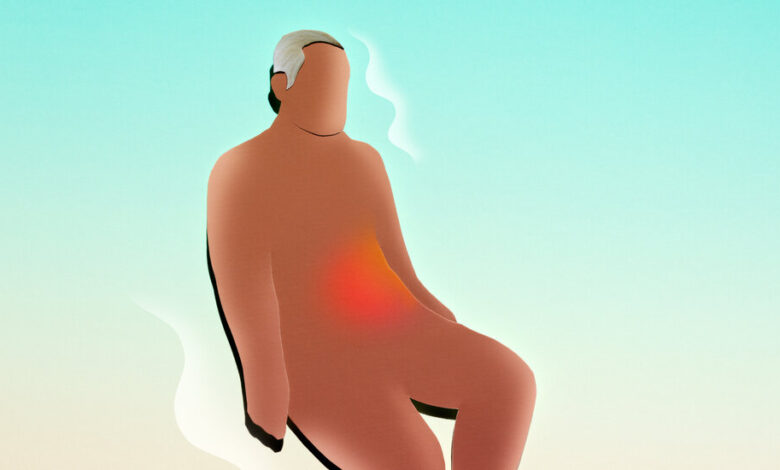Was This Man’s Weakness Related to Recent Oral Surgery?

It was early morning when the woman crept into the living room, where her 82-year-old partner was sleeping. He didn’t usually sleep in his recliner but was in and out of bed so many times with diarrhea two nights earlier that she was relieved when he decided to sleep in his favorite chair. His eyes opened as she started to close the door. “I can’t get out of the chair,” he said quietly. His feet were on the floor, but, he told her, he didn’t have the strength to rise or even move. This was a man who, in the 21 years she’d known and loved him, was still only when he was asleep. Now, with his arms hanging limply beside him, his face pale behind his constant New Mexico tan, he looked weaker and sicker than she had ever seen him.
She struggled to help him to his feet. Then, his arm around her neck, hers around his shoulders, she shuffled him into the bathroom, then into his clothes and to the car to head to PresNow 24/7 Urgent and Emergency Care, near their home in Albuquerque.
The emergency room was bustling, even early on a Sunday morning, but the man was seen quickly. The sudden onset of weakness in a man his age required urgency. They had been in the triage area only a few minutes when Dr. Lawrence Gernon entered the curtained-off area and introduced himself. “What’s going on?” he asked casually.
Five weeks earlier, the man reported, he had three teeth removed. He took 10 days of antibiotics as instructed and was fine until earlier that week. At first it was just fatigue. On Thursday, he was so tired after his daily hike that he had to take a nap when he got home. And he never takes naps, he added. Then came the diarrhea. He had to use the bathroom during the night maybe a dozen times. Around the same time, his congestion and runny nose worsened. The oral surgeon had mentioned this symptom, which was typical, but warned about possible infection. The man wanted his partner to call the dentist for help, but she was a retired nurse and felt certain he needed to go to the emergency room instead.
Gernon examined the patient carefully. His heart was beating rapidly, and his oxygen level was low. His mouth looked completely normal. He was clearly congested, but the surgical site looked well healed. He had significant tenderness when the doctor pushed on the lower left side of his abdomen — but, importantly, no pain at all when the pressure was released and the abdominal wall rebounded. That was reassuring; if there was infection present, it had not spread to the sensitive lining around the gut. Still, his belly looked distended. “You know, I don’t think the problem is here,” Gernon told the patient, pointing to the man’s nose and mouth. “I think it’s here,” he said, pointing to his distended belly. The doctor ordered a tube to be inserted through the man’s nose into his stomach. Almost immediately dark brown fluid poured out of the tube into the connected container.
CT scans and X-rays confirmed what the doctor found on exam: The sinuses and lungs were fine. But the CT of the man’s abdomen was not. In the section of the gut where the large intestine connects to the small intestine, the walls were thickened and so swollen that the passage was completely closed off for four or five inches. The tissues surrounding the blocked tube were haloed by streaks of inflammation. His guts were obstructed by what looked to be a tumor surrounding and invading his intestinal walls. That’s why so much brown fluid was coming out of the tube in his stomach. Those digestive fluids, made continuously by his stomach and guts, had nowhere else to go. It wasn’t clear yet if what was causing this blockage was indeed a tumor. What was clear was that it had to come out. And soon.
Surgical Options
It wasn’t until after the ambulance delivered the patient to Presbyterian Rust Medical Center that one doctor mentioned the possibility that this was cancer. That was upsetting to hear. Thirty years earlier, his wife died from cancer, and he had vivid and terrible memories of her diagnosis, her treatment and her death. The possibility that he would suffer the same fate and that this disease would change the life that he and his partner had planned together worried him.
Dr. Kevin Hudenko, the surgeon assigned to the case, came by to introduce himself to the patient and discuss the surgical options, explaining that he would prefer to do the procedure laparoscopically, using tiny cameras and instruments inserted through small slits made into the patient’s abdominal wall rather than a single large incision. The laparoscopic approach would allow for a faster recovery, and they could always revert to the traditional surgery if necessary.
An Unexpected Discovery
The following day, the man was rolled into the operating room, where the incisions were made and instruments set into place. Carbon dioxide was pumped into the man’s belly to give the team room to see and maneuver. Hudenko watched on the monitor as he moved the camera and tiny gripping tools toward the affected region of the small intestines. He gently separated the loops of small bowel and inched his way toward the blockage. He knew from experience that when he got to the cancer, the outer surface of the intestine would be puckered and irregular, distorted by the invading growth. Instead, the bowels were smooth and strangely sticky, though they peeled apart easily. He was almost to the spot where he expected to find the blockage when a thick yellowish liquid spilled out from between the separated loops. It looked like pus. That was unexpected. He quickly vacuumed up the viscous fluid and searched for the source. Behind the wall of intestines, underneath the purulent liquid, he could see a hole. It was at the base of the appendix. This wasn’t cancer. It was a ruptured appendix.
The appendix is a small finger of bowel that comes off the large intestine just past the point where it intersects with the small intestine. Appendicitis occurs when the connection to the bowel wall gets blocked. The normal secretions have no outlet and build up in the hollow tube, stretching the walls until finally they rupture and the now-putrid fluid bursts into the abdominal cavity. Normally this causes fever and abdominal pain that is initially felt in the region around the belly button but then moves to the right lower quadrant as the infection and inflammation spread to the highly sensitive lining of the abdominal cavity known as the peritoneum. And yet this man had none of the expected pain. Why?
The intestines have few pain fibers. Most pain in the gut comes from the tissues that line the abdominal wall. When the appendix is surrounded only by intestines, away from the sensitive peritoneum, it can rupture and cause little or no pain. The small intestines move around the abdominal cavity freely, like snakes in a bag. When they came into contact with this man’s ruptured appendix, these loops of bowel became sticky with inflammation and formed a wall around the injury, containing the pus and other purulence.
When the surgeon saw that this wasn’t a cancer, he turned to his assistant, and they high-fived. Thanks to the images provided by CTs and M.R.I.s, surgeons are rarely surprised by what they find in the operating room. And when they are, the surprise is usually a bad one: cancer, for instance, instead of what they expected. The entire surgical team was thrilled by this unexpected finding.
After the surgery, Hudenko went to visit his patient in the recovery room. “Good news,” he announced to the groggy man. “I’ll give you details when you are more awake, but the punchline is this: You don’t have cancer.”
Recovery is fast when surgery is done through three tiny incisions, and the man went home a couple of days later. At 82, cancer is a much more likely diagnosis than appendicitis. The man was very happy to be an exception. His surgery was three months before Christmas, but to the patient and his partner, the holiday came early last year, with the best gift possible — their old life together.
Lisa Sanders, M.D., is a contributing writer for the magazine. Her latest book is “Diagnosis: Solving the Most Baffling Medical Mysteries.” If you have a solved case to share, write her at Lisa.Sandersmdnyt@gmail.com.
Source link



